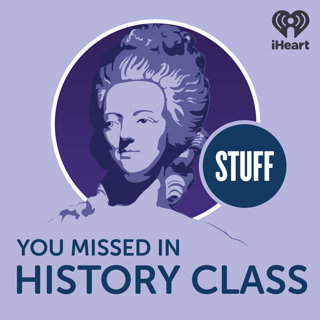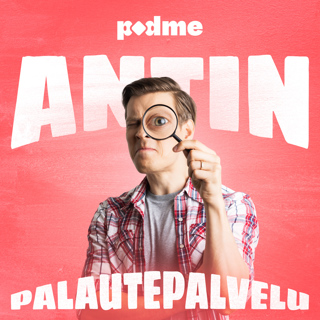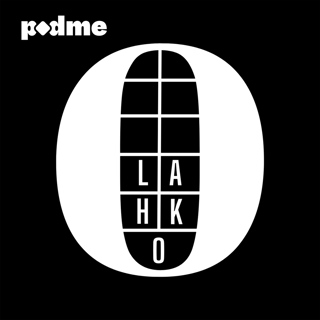
Behind the Scenes Minis: Learned Women and Sharkey
Tracy shares a funny confusion about Unitarians and the University of Utrecht she kept having during research. Holly talks about how often escape stories to claim the escaper was never heard from again, even if that's not true.See omnystudio.com/listener for privacy information.
15 Elo 18min

William J. Sharkey’s Not-so-great Escape
William J. Sharkey was a pickpocket, a con man, a politician, and a murderer, though whether or not that murder was an accident became the question at the center of a case that gripped New York for months. And then, he vanished. Sort of. Research: “An Assassin’s Career.” New York Times. March 22, 1875. https://timesmachine.nytimes.com/timesmachine/1875/03/22/91671169.pdf?pdf_redirect=true&ip=0 Asbury, Herbert. “The Escape of William J. Sharkey.” The New Yorker. Feb. 27, 1931. https://www.newyorker.com/magazine/1931/03/07/and the-escape-of-william-j-sharkey “Criminal’s Chances.” New-York Tribune. Nov. 20, 1873. https://www.newspapers.com/image/85393879/?match=1&terms=William%20J.%20Sharkey “The Death Penalty.” The New York Times. July 4, 1873. https://www.newspapers.com/image/20559978/?match=1&terms=William%20J.%20Sharkey The Editors of Encyclopaedia Britannica. "Boss Tweed". Encyclopedia Britannica, 31 May. 2025, https://www.britannica.com/biography/Boss-Tweed “The Escaped Murderer.” The Sun. Feb. 24, 1875. https://www.newspapers.com/image/51905732/?match=1&terms=maggie%20jourdan “Found Guilty.” New York Times. June 22, 1873. https://timesmachine.nytimes.com/timesmachine/1873/06/22/90527758.pdf?pdf_redirect=true&ip=0 “Last Days of the Tombs.” New-York Tribune. May 23, 1897. https://www.newspapers.com/image/78349840/?match=1&terms=%22william%20j.%20sharkey%22 “Maggie Jourdan Bailed.” New York Daily Herald. Jan. 4, 1874. “The Murder Record: The Dunn Murder.” New York Times. June 20, 1873. https://timesmachine.nytimes.com/timesmachine/1873/06/20/90526851.pdf?pdf_redirect=true&ip=0 “Scanlan, the Actor, Dead.” The Sun. Feb. 20, 1898. https://www.newspapers.com/image/79111299/?match=1&terms=%22william%20j.%20sharkey%22 “The Sharkey Case.” The New York Times. July 25, 1873. https://www.newspapers.com/image/20561956/?match=1&terms=William%20J.%20Sharkey%20%22writ%20of%20error%22 “Sharkey Is Still Alive.” The Evening World. March 6, 1900. https://www.newspapers.com/image/50555426/?match=1&terms=%22william%20j.%20sharkey%22 “Sharkey’s Escape.” New York Times. Nov. 20, 1873. https://www.newspapers.com/image/20503882/?match=1&terms=maggie%20jourdan “Trial of William J. Sharkey … “ New York Daily Herald. June 21, 1873. https://www.newspapers.com/image/329612596/?match=1&terms=William%20J.%20Sharkey “Why Is the Manhattan House of Detention Called the Tombs?” The New York Historical. https://www.nyhistory.org/community/manhattan-house-of-detention “Wm. J. Sharkey’s Escape.” The Sun. June 23, 1879. https://www.newspapers.com/image/78200292/?match=1&terms=maggie%20jourdan See omnystudio.com/listener for privacy information.
13 Elo 33min

Anna Maria van Schurman, Star of Utrecht
Polymath Anna Maria van Schurman was a very well-educated woman in the 17th century, making her exceptional. She’s described as the most learned woman of her time, and she basically became a celebrity because of it. Research: Aldersey-Williams, Hugh. “’A Truer and Deeper Knowledge’: Anna Maria van Schurman’s The Learned Maid (1659).” Public Domain Review. https://publicdomainreview.org/collection/the-learned-maid/ "Anna Maria van Schurman." Encyclopedia of World Biography Online, vol. 31, Gale, 2011. Gale In Context: Opposing Viewpoints, link.gale.com/apps/doc/K1631009647/GPS?u=mlin_n_melpub&sid=bookmark-GPS&xid=cdba4228. Accessed 21 July 2025. “Anna Maria van Schurman: an academic multitalent.” Utrecht University. https://www.uu.nl/en/background/anna-maria-van-schurman-an-academic-multitalent Clarke, Desmond M. “Anna Maria Van Schurman and Women’s Education.” Revue Philosophique de la France et de l'Étranger. No. 3. July-September 2013. Via JSTOR. https://www.jstor.org/stable/42773326 de Baar, Mirjam. “Elisabeth of Bohemia’s Lifelong Friendship with Anna Maria van Schurman (1607–1678).” From Elisabeth of Bohemia (1618–1680): A Philosopher in her Historical Context, Women in the History of Philosophy and Sciences 9. S. Ebbersmeyer and S. Hutton (eds.). https://doi.org/10.1007/978-3-030-71527-4_2 de Baar, Mirjam. “SCHURMAN, Anna Maria van.” Online Dictionary of Dutch Women. https://resources.huygens.knaw.nl/vrouwenlexicon/lemmata/data/Schurman,%20Anna%20Maria%20van/en 1/13/2014. Dekker, Maryse. “Anna Maria van Schurman: Brains, Arts and Feminist avant la letter.” Art Herstory. 2/23/2021. https://artherstory.net/anna-maria-van-schurman-artist-scholar-and-woman-of-letters/ Larsen, Anne R. “A Women's Republic of Letters: Anna Maria van Schurman, Marie de Gournay, and Female Self-Representation in Relation to the Public Sphere.” Early Modern Women, Fall 2008, Vol. 3 (Fall 2008). Via JSTOR. https://www.jstor.org/stable/23541520 Larsen, Anne R. “Religious Alterity.” French Forum, FALL 2018, Vol. 43, No. 2. Via JSTOR. https://www.jstor.org/stable/10.2307/26762079 National Museum of Women in the Arts. “Anna Maria van Schurman.” https://nmwa.org/art/artists/anna-maria-van-schurman/ National Museum of Women in the Arts. “Anna Maria van Schurman: Self-Portrait.” https://nmwa.org/art/collection/schurman-self-portrait/ Pal, Carol. “Chapter 2 - Anna Maria van Schurman: the birth of an intellectual network.” From Republic of Women: Rethinking the Republic of Letters in the Seventeenth Century.” Cambridge University Press. 2012. https://doi.org/10.1017/CBO9781139087490.005 Project Vox. “Van Schurman (1607-1678).” https://projectvox.org/van-schurman-1607-1678/ Sint Nicolaas, Samantha. “The Correspondence of Anna Maria van Schurman.” Early Modern Letters Online. http://emlo-portal.bodleian.ox.ac.uk/collections/?catalogue=anna-maria-van-schurman The Editors of Encyclopaedia Britannica. "Jean de Labadie". Encyclopedia Britannica, 9 Feb. 2025, https://www.britannica.com/biography/Jean-de-Labadie. Accessed 25 July 2025. Van Beek, Pieta. “The first female university student: Anna Maria van Schurman (1636).” Igitur. Utrecht Publishing & Archiving Services. 2010. Van der Stighelen, Katlijne. “Chapter Title: Anna Francisca de Bruyns (1604/5–1656), Artist, Wife and Mother: a Contextual Approach to Her Forgotten Artistic Career.” From Women and Gender in the Early Modern Low Countries. Via JSTOR. https://www.jstor.org/stable/10.1163/j.ctvrxk3hp.12 Weststeijn, Thijs. “Anna Maria Van Schurman’s Chinese Calligraphy.” Early Modern Low Countries 7 (2023) 1, pp. 1-25 - eISSN: 2543-1587. See omnystudio.com/listener for privacy information.
11 Elo 43min

SYMHC Classics: Sappho
This 2019 episode covers Sappho, often described as the greatest female poet of ancient Greece. Her reputation as a poet has persisted for more than 2500 years, but the overwhelming majority of her work has not.See omnystudio.com/listener for privacy information.
9 Elo 32min

Behind the Scenes Minis: Fitz Hugh and Sleepytime
Holly talks about gaining compassion for Fitz Hugh Ludlow through reading his work. Tracy discusses her training in massage school. See omnystudio.com/listener for privacy information.
8 Elo 28min

Paracelsus and the Doctrine of Signatures
16th-century Swiss physician Paracelsus was frustrated with established medical practice and academia and he was sometimes on the lam because of his beliefs. He wrote at length about the idea that items in the natural world carried “signatures” in their appearance that could tell you visually how they could be used medicinally. Research: Bennett, B.C. Doctrine of Signatures: An explanation of medicinal plant discovery or Dissemination of knowledge?. Econ Bot 61, 246–255 (2007). https://doi.org/10.1663/0013-0001(2007)61[246:DOSAEO]2.0.CO;2 Dafni, Amots, and E. Lev. “The Doctrine of Signatures in Present-Day Israel.” Economic Botany, vol. 56, no. 4, 2002, pp. 328–34. JSTOR, http://www.jstor.org/stable/4256605 “The Doctrine Of Signatures.” The British Medical Journal, vol. 1, no. 627, 1873, pp. 19–19. JSTOR, http://www.jstor.org/stable/25233757 “The Doctrine of Signatures.” John Moore Museum. May 11, 2021. https://www.johnmooremuseum.org/the-doctrine-of-signatures/ The Editors of Encyclopaedia Britannica. "laudanum". Encyclopedia Britannica, 19 Jul. 2025, https://www.britannica.com/science/laudanum The Editors of Encyclopaedia Britannica. "Peasants’ War". Encyclopedia Britannica, 20 Aug. 2020, https://www.britannica.com/event/Peasants-War Grzybowski, Andrzej and Katarzyna Pawlikowska-Łagód. “Some lesser-known facts on the early history of syphilis in Europe.” Clinics in Dermatology. Volume 42, Issue 2. 2024. Pages 128-133. https://doi.org/10.1016/j.clindermatol.2023.12.003. Hargrave, John G. "Paracelsus". Encyclopedia Britannica, 3 Jul. 2025, https://www.britannica.com/biography/Paracelsus “The history of syphilis part two: Treatments, cures and legislation.” Science Museum UK. Nov. 8, 2023. https://www.sciencemuseum.org.uk/objects-and-stories/history-syphilis-part-two-treatments-cures-and-legislation Kikuchihara, Y., Hirai, H. (2015). Signatura Rerum Theory. In: Sgarbi, M. (eds) Encyclopedia of Renaissance Philosophy. Springer, Cham. https://doi.org/10.1007/978-3-319-02848-4_405-1 Lund, F B. “PARACELSUS.” Annals of surgery vol. 94,4 (1931): 548-61. doi:10.1097/00000658-193110000-00009 Michaleas, Spyros N et al. “Theophrastus Bombastus Von Hohenheim (Paracelsus) (1493-1541): The eminent physician and pioneer of toxicology.” Toxicology reports vol. 8 411-414. 23 Feb. 2021, doi:10.1016/j.toxrep.2021.02.012 Paracelsus. “Of the supreme mysteries of nature. : Of the spirits of the planets. of occult philosophy. The magical, sympathetical, and antipathetical cure of wounds and diseases. The mysteries of the twelve signs of the zodiack.” London. 1656. Accessed online: https://archive.org/details/paracelsvsofsupr00para/page/n9/mode/2up Simon, Matt. “Fantastically Wrong: The Strange History of Using Organ-Shaped Plants to Treat Disease.” Wired. July 16, 2014. https://www.wired.com/2014/07/fantastically-wrong-doctrine-of-signatures/ Tampa, M. et al. “Brief history of syphilis.” Journal of medicine and life vol. 7,1 (2014): 4-10.https://pmc.ncbi.nlm.nih.gov/articles/PMC3956094/#R6 Waite, Arthur Edward. “Lives of alchemystical philosophers based on materials collected in 1815 : and supplemented by recent researches with a philosophical demonstration of the true principles of the magnum opus, or great work of alchemical re-construction, and some account of the spiritual chemistry.” London. G. Redway. 1888. Accessed online: https://archive.org/details/livesofalchemyst1888wait See omnystudio.com/listener for privacy information.
6 Elo 35min

Fitz Hugh Ludlow
Fitz Hugh Ludlow’s fame as a writer was directly tied to his drug use initially. In his final years, his advocacy for treatment of the illness of addiction was really ahead of its time. Research: “Beyond the Hasheesh Eater: Fitz Hugh Ludlow, A Nineteenth Century Writer and Adventurer.” Schaffer Library. Union College. https://exhibits.schafferlibrarycollections.org/s/beyond-the-hasheesh-eater-fitz-hugh-ludlow-a-nineteenth-century-writer-and-adventurer/page/welcome Bredeson, Robert C. “Landscape Description in Nineteenth-Century American Travel Literature.” American Quarterly, vol. 20, no. 1, 1968, pp. 86–94. JSTOR, https://doi.org/10.2307/2710992 Day, Horace B. “The Opium Habit.” 1868. Accessed online: https://www.gutenberg.org/cache/epub/7293/pg7293-images.html “Death of Fitz Hugh Ludlow, the Hasheesh Eater.” The Buffalo Daily Repiblic. Oct. 7, 1870. https://www.newspapers.com/image/1140456339/?match=1&terms=Fitz%20Hugh%20Ludlow “Fitz Hugh Ludlow.” New York Times. Oct. 9, 1870. https://www.newspapers.com/image/26001499/?match=1&terms=Fitz%20Hugh%20Ludlow “Fitz Hugh Ludlow.” New York Times. Sept. 12, 1903. https://www.newspapers.com/image/20430047/?match=1&terms=Fitz%20Hugh%20Ludlow Hendricks, Gordon. “Roaming the West with ALBERT BIERSTADT.” The American West. Vol. XII. No. 1. January 1975. https://npshistory.com/newsletters/the-american-west/v12n1.pdf “Ludlow, Fitz Hugh (1836-1870).” The Vault at Pfaff’s. Lehigh University. https://pfaffs.web.lehigh.edu/node/54134 Ludlow, Fitz-Hugh. “Among the Mormons.” The Atlantic. April 1864. https://www.theatlantic.com/magazine/archive/1864/04/among-the-mormons/306013/ Ludlow, Fitz Hugh. “The Apocalypse of Hasheesh.” Putnam’s Monthly. Vol. VIII. December 1856. Accessed online: https://web.archive.org/web/20140503090034/http://www.lycaeum.org/nepenthes/Ludlow/Texts/apocalyp.html Ludlow, Fitz Hugh. “The hasheesh eater : being passages from the life of a Pythagorean.” New York. Harper and Bros. 1857. https://archive.org/details/66640730R.nlm.nih.gov/mode/2up Ludlow, Fitz Hugh. “The heart of the continent : a record of travel across the plains and in Oregon, with an examination of the Mormon principle.” New York. Hurd and Houghton. 1870. Accessed online: https://archive.org/details/heartofcontinent00ludl/page/n5/mode/2up Ludlow, Fitz-Hugh. “If Massa Put Guns Into Our Han's.” The Atlantic. April 1865. https://www.theatlantic.com/magazine/archive/1865/04/if-massa-put-guns-into-our-hans/629143/ Ludlow, Fitz-Hugh. “Seven Weeks in the Great Yo-Semite.” The Atlantic. June 1864. https://www.theatlantic.com/magazine/archive/1864/06/seven-weeks-in-the-great-yo-semite/628596/ Ludlow, Fitz-Hugh. “Through-Tickets to San Francisco: A Prophecy.” The Atlantic. November 1864. https://www.theatlantic.com/magazine/archive/1864/11/through-tickets-to-san-francisco-a-prophecy/628652/ “Ludlow-Santo Domingo Library.” Harvard Library. https://library.harvard.edu/collections/ludlow-santo-domingo-library See omnystudio.com/listener for privacy information.
4 Elo 40min

SYMHC Classics: James Baldwin
This 2020 episode covers James Baldwin, who was a brilliant essayist, one of the chroniclers of the Civil Rights Movement, and a powerful voice against racism.See omnystudio.com/listener for privacy information.
2 Elo 29min






















